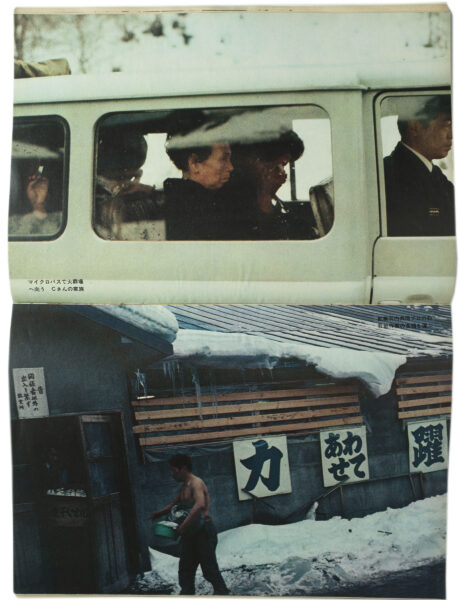Asahi Journal 英文要旨
1959 - 1992
Weekly
Founding publisher: Asahi Shimbun-sha
Founding editor: Ougitani Shozo
Size B5 approx.26 x 18 cm.
The Asahi Journal was founded in 1959 under the leadership of Shinjiro Tanaka, director and head of the publishing bureau of the Asahi Shimbun, in the midst of the weekly magazine boom and the rush to launch new weekly magazines following the launch of Shukan Shincho, with "reporting, commentary and criticism" as its three pillars.
‘The Asahi Journal’ was one of the intelligent type weekly magazine which reported important issues about pollution problems, social movements, and anti-nuclear weapon, anti-treaty of mutual cooperation and security with U.S.,etc. So not a specific photo magazine.
The first issue, dated 15 March 1959, was priced at 40 yen and had a circulation of 370,000. It was the third largest weekly magazine for the Asahi Shimbun at the time, after the Shukan Asahi and Asahi Graph
It was a magazine that flourished in the 1960s and 1970s, and in this era, members who made a name for themselves in the history of postwar Japanese photography, including Moriyama Daido, Nakahira Takuma and Fukase Masahisa , but also new talents like Suzuki Kiyoshi and Fujiwara Shin’ya, were in charge of the gravure pages. Until the end of the 1960s, the gravure pages were in black and white, but after Januari 4 1970, all pages of the gravure section were printed in color.
With the avant-garde of contemporary photographers in color gravure, which was yet to be commonly used in periodicals at that time, was the project of the editor Naya Toshirō. In competition with other magazines, Naya, who had been transferred from Asahi Graph, insisted on increasing the number of photography pages for gravure printing, and since his launch of the “Hirakareta sedai” ( Open Generation) series in 1967, he continued to run eight photo pages through the early 1970s.
He selected photographers with the help of Nagano Shigeichi.
At the end of the 1980s, circulation dropped. International articles and 'women's stories' were made the new selling points, and TV commercials were run at a cost of tens of millions of yen. However, the average circulation in the first half of 1990 continued to stagnate at 60,000 copies, and as there was no prospect of improvement with the circulation falling below 60,000, generating an annual loss of several hundred million yen, the magazine ceased publication with the 29 May 1992 issue as the last issue,
.
1969 Vol.11 No.1 5 Januari
Editor Yukata Shinoyama
Cover: Yamamoto Sada
134 pages
Selection of content:
High school student’s heart 1 - Rebellion, Nakahira Takuma, 3 pages b&w gravure /
Electronic Hippies, Daido Moriyama, 8 pages b&w gravure
.
Moriyama Daido: Electronic Hippies.
8 pages b&w.
.
Asahi Journal 1971 Vol 13 No. 6 12 Februari
Editor in Chief: Konami Yuichiro
Cover:Shimizu Tetsuya
110 pages
Selection of content:
White snow coal mine, Suzuki Kiyoshi, 7 pages in color gravure / Maho Suzuki, Ishiguro Kenji, 3 pages / Manga, Genpei Akasegawa, 3 pages.
Suzuki Kiyoshi; White snow coal mine.
7 pages.







